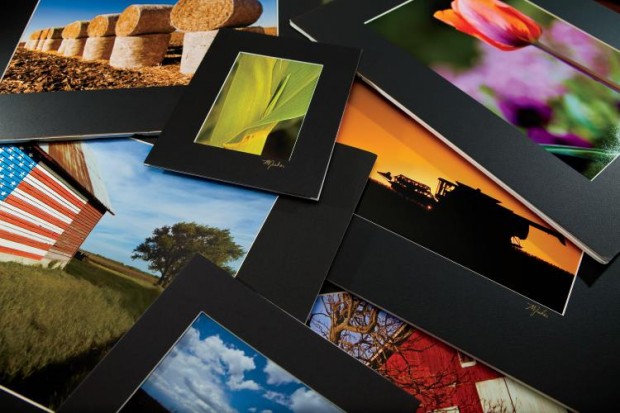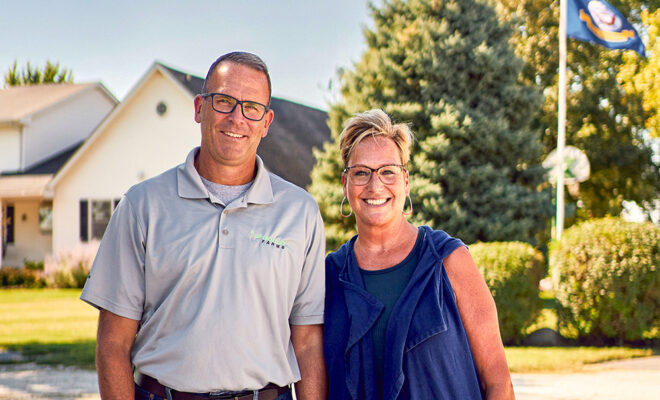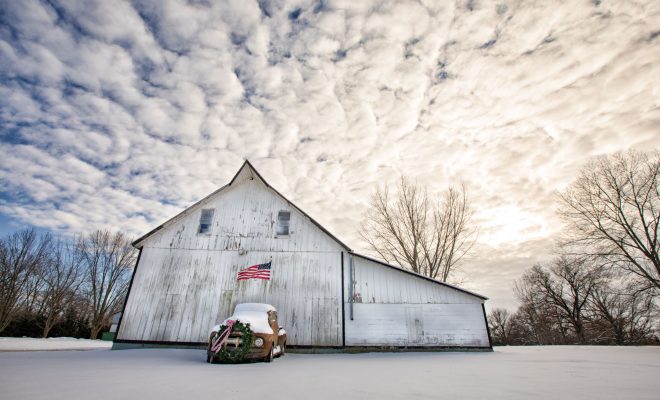Illinois Photographer Michael Zecher Pictures Farms in the Best Light
By Carol Cowan |In the chill of pre-dawn, feet wet with dew, Michael Zecher stands at the base of a rise, waiting for the day’s first rays to hit the John Deere combine atop the hill in front of him. When the moment comes – that moment when the sunrise on the eastern horizon shines mirrored on the combine’s green body and the sky behind blushes pink over blue – Zecher goes to work. Not harvesting the cornfields – at least, not today. Today, he snaps the shutter of a Canon 40D and documents this singular instant with the lens of his camera.
“The excitement of photography for me is capturing a moment in time when everything comes together perfectly: the subject, the lighting and the composition – the sense of the moment that I tripped the shutter,” Zecher says.

Patience is the Virtue
Arresting that certain bend of the grass or scud of the clouds across an azure sky requires patience, and lots of it – kind of like farming. In fact, the Mercer County farmer and photographer summarizes his technique in three words: “Patience, patience, patience.”
Relying almost exclusively on natural light and returning to a location at different times of the day to get the perfect conditions, Zecher rarely tweaks his images in the “digital darkroom” after the initial snap. His goal is to faithfully represent each scene as he originally saw it.
“I tend to be a very technical photographer, and I try to zero in on what is core to what I’m seeing. I’ll shoot a picture and then I’ll look within that scene, trying to narrow it down to the key thing that catches the eye. I might step closer or try a different angle; I’ll put my camera down low or move it up high.”
Bumper Crop of Images
His painstaking technique has yielded a portfolio of more than 10,000 images, many with agricultural themes: a red barn dusted with snow looming tall above white-blanketed fields; farm buildings and a lone windmill silhouetted black against a golden sunset; rows of tasseled corn and rows of plump, yellow kernels; round hay bales in a dusty line.
Nature scenes, wildlife and architecture fill out Zecher’s repertoire, and his photography has taken him to 34 states, four foreign countries and 22 national parks. But his agricultural photographs are that for which he is most noted.
He admits he was a little nervous before showing them for the first time in Chicago. “I wasn’t sure how the folks up there (about 170 miles from his home) would like pictures of corn and soybeans, but all different kinds of people had real positive memories of agriculture, so they were very interested. We’re extremely impressed with how well they’ve gone over,” Zecher says.

Rooted in the Soil
His own roots in agriculture run deep. Raised on a grain and livestock farm in Eastern Illinois, Zecher taught high school agriculture in Auburn and then managed a feed production plant in western Iowa before moving to Aledo in 2009 to partner with his father-in-law in farming 2,200 acres of corn and soybeans.
“Farming is still No. 1,” he says. “That’s where the bread and butter come from, and I really enjoy it. I like getting out, getting my hands dirty, and I like the variety of farming. There’s just something about the attachment to the earth. And there’s something very therapeutic about sitting in the tractor cab and driving all day long.”
He stumbled into photography almost accidentally. “I actually bought my first camera back when I was teaching high school with the idea of taking pictures of the kids at FFA contests and just doing a little ag department promotion,” Zecher recalls. “When I started playing with it and taking some nature pictures, photography became a serious hobby.”
Going Pro
In 2008, Zecher began showing his work, and he and his wife, Jennifer, hit about a dozen shows each year.
As for his gear, Zecher shot slide film on Canon’s Elan and A2 cameras before jumping the digital divide in 2005 with the purchase of a Canon 20D. In 2008, he acquired his current “workhorse” – a Canon 40D. He also uses Canon lenses. “I’ve got a range of lenses, from the very wide angle to my longest lens, which is a 300mm, and then I’ve got some teleconverters I can put on that. I’ve definitely got quite a few toys to choose from,” he says.
His advice to amateur photographers? “The big thing is patience,” he reiterates. “Take the time to go out and play with your camera.”
Zecher’s work can be seen and purchased online at www.zecherphoto.com.




